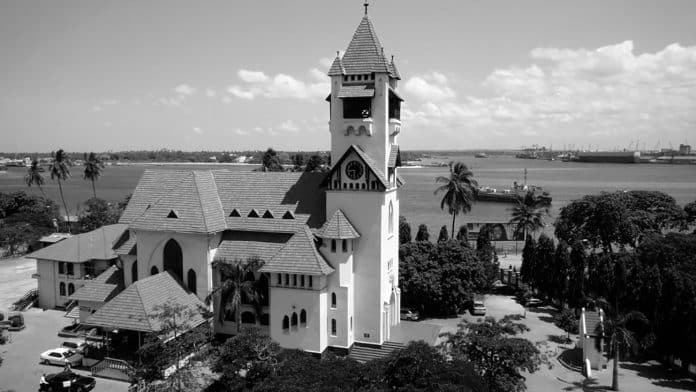Catholic Church in Tanzania – History, Indigenisation, Structure and More
Introduction
Before looking into the Catholic Church in Tanzania, let us first understand briefly about the country itself. The Islands of Zanzibar and Tanganyika were united to form The United Republic of Tanzania. Tanganyika was liberalized from Britain in 1961 while Zanzibar was got its independence 2 years later in 1963. The 2 united to form Tanzania in 1964. There are more than 130 tribes in Tanzania which spans an area of 945,090 square kilometers. The national language is Swahili which is spoken by most Tanzanians.
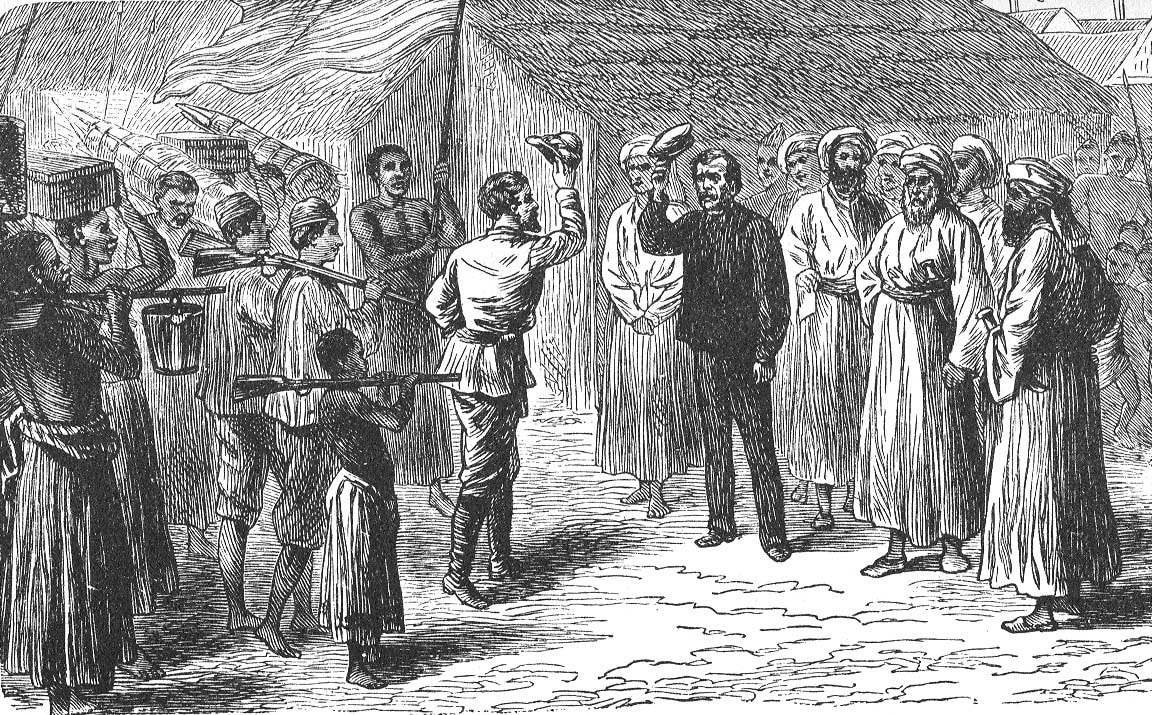
Tanganyika (Tanzania mainland) had been ruled by tribal chiefs up until 1885. All external trade which was mainly in slaves and ivory was controlled by the sultan of Zanzibar who had representatives in all the trade centers. Explorers like Henry Stanley and David Livingstone are the ones that exposed this cruel trade and quickened the missionary venture. Tanganyika was a German colony from 1885 up until World War I when it was taken over by the British as a United Nations trusteeship.
History of the Catholic Church in Tanzania
The Portuguese Augustinian missionaries were the first evangelists of the Catholic Church in Tanzania, they arrived in Zanzibar in 1499 with Vasco Da Gama. They however did not last long because of the Arab Muslim opposition and their mission cam to an end in 1698 because of the Oman-Arab Conquest.
The other successful evangelization of the Catholic Church in Tanzania was in the 19th century carried out by 3 religious congregations namely the Benedictine Monks, the White Fathers and the Holy Ghost Fathers.
The Holy Ghost Fathers arrived first lead by Fr Antoine Horner. They arrived in Zanzibar in 1863 later crossed to Bagamoyo, Tanzania in 1868 and opened freed slaves’ rural settlements. Slaves that had been freed from Arab slave traders by the British marines were received and taught in these settlements by the missionaries. Catechists that had been trained in these villages helped the missionaries to spread northwards up to the slopes of Mount Kilimanjaro. The first catechists were ex slaves.
Portuguese missionaries who arrived in 1499 were the first evangelists of the Catholic Church in Tanzania, island of Zanzibar, they were accompanied by Vasco Da Gama. As of result of the Arab Muslim opposition they were forced to stop their mission early in 1698 due to the Oman-Arab conquest.
The Africa (White Fathers) missionaries led by Fr. Livinhac came in 1878 on 2 different groups, one started on the shores of Lake Victoria and the other on Lake Tanganyika. The mission to the great lakes spread their gospel to the entire West of Tanzania and neighboring countries namely Uganda, Burundi, East Zaire and Rwanda.
In 1887 The Benedictine missionary monks of Saint Ottilien arrived in Dar es Salaam they then moved southward evangelizing the Catholic Church in Tanzania up to the Ruvuma River that forms the boarder with Mozambique. They had two monasteries Peramiho and Ndanda which became hubs for modern civilization and development in the South of Tanzania
Post World War I more missionary societies and congregations came to help growing the Catholic Church in Tanzania. The congregations which came at this particular time were the Pallotines, Passionists, Consolata and Capuchins. More missionaries arrived after World War II which were the Salvatorians, Rosminians and Maryknolls. One or two Diocese were given to the missionary groups by Propaganda Fide to evangelize.
Indigenization
Catechists of the Catholic Church in Tanzania
The catechists were the 1st indigenous evangelists of the Catholic Church in Tanzania. They had the advantage of knowing the local customs and languages. The catechists became examples to their colleagues. They assumed the missionaries responsibilities when the missionaries were chased during and after World War I. Some famous catechists included Adrien Atman who was a model catechist in Ufipa by Lake Tanganyika, Ibrahim Kazigu and Yohana Mahogora in Bukoba situated west of Lake Victoria. At the moment there are about 11,221 Catechists in Tanzania. Compared to the early catechists the prestige of present day catechists has deteriorated partly due to the poor education system.
Clergy of the Catholic Church in Tanzania
Forming a local clergy was the main aim of the missionaries of Africa known as White Fathers. In 1904 they opened the first seminary in Rubya – Bukoba and their efforts paid off. In 1917 the first 4 Tanzanian priests from Africa were ordained in Mwanza in NorthWest Tanzania and Bukoba. Bukoba got its first Tanzanian local bishop Laurean Rugambwa in 1952. He was elected by Pope John XIII in 1960 as the 1st African Cardinal. In 1989 Arusha, who was the last of the missionary bishops of the Catholic Church in Tanzania resigned. As of 1994 Tanzania had 29 Dioceses which were all led by African Bishops. Priest training normally begins in 1 of the 23 minor seminaries.
Religious Men of the Catholic Church in Tanzania
Many diocesan lay religious assemblies for men had been founded by Dioceses before the 2nd Vatican Council. After the 2nd Vatican Council these assemblies were subdued and the members were made to join international congregations. The local charisms were lost as a result and all efforts to resuscitate these congregations have failed. The missionary assemblies are increasing and a number of them are enlisting local vocations. There are currently 34 functional religious congregations in the Catholic Church Tanzania and of the 642 religious, 108 are local.
Religious Women of the Catholic Church in Tanzania
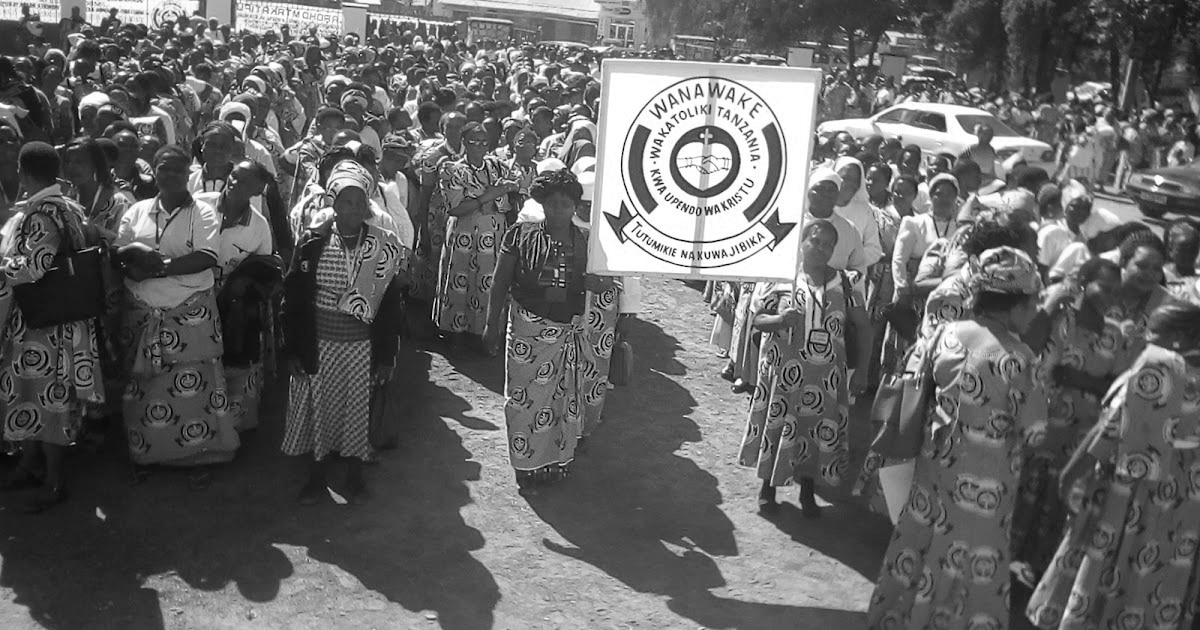
The church women of the Catholic Church in Tanzania are a lot more than the men. There are a total of 18 diocesan women religious congregations that are recognized and have a total of 6,533 members. These congregations are growing really fast. They are currently trying to raise the poor academic standards of their current members. The international missionary assemblies are recruiting Tanzanians successfully. At the moment out of the 1577 Women Religious of international missionary assemblies working in Tanzania, 905 are Tanzanian nationals. A lot of the Tanzania women religious are working abroad as missionaries. The diocesan congregations have housing structures in Burundi, Zambia and Kenya. The ones in missionary congregations have merged with teams in Europe, Sudan and Libya.
Pastoral Work in the Catholic Church in Tanzania
The total population of Tanzania is approximately 30,360,000 pf which 28% i.e. 8,500,800 are part of the Catholic Church in Tanzania. The 2nd Vatican Council rejuvenated the Church in Tanzania. Hymns were composed in Swahili while Liturgical books were also translated into Swahili. Drums and several other traditional musical instruments started being used in the liturgy which increased the active participation of the members. Members also became more involved in activities of the church. Small Christian Communities were introduced for more effective pastoral work. The small Christian communities consist of 12 to 20 families each. The small Christian communities form the basic churches with their leaders, their own liturgical services and a social life which they share. In places where these communities have been a success have lead to a hearty church and a good participation in church leadership by lay people. The 1st President of Tanzania, Nyerere’s political beliefs of Ujamaa (African Socialism) which was also organized on identical lines lead to the introduction of these small basic communities. Though the Ujamaa ideals are decreasing the small Christian communities have remained strong. In 1975 the countries which made the seven AMECEA (Zambia, Uganda, Ethiopia, Malawi, Kenya, Sudan, Tanzania) decided to adopt the small Christian communities as their general pastoral strategy. The AMECEA general assembly confirmed that the Small Christian Communities were not optional in their churches but instead they were central to the life of faith and evangelism.
Leaders of the Catholic Church in Tanzania are chosen from the small Christian communities to represent the faithful in the National Lay Council, Diocesan, Parish and Sub-Parish councils. The councils at the parish and sub-parish level are in charge of most of the church activities. The have played key roles in making the local churches become more self sufficient financially. The work hand in hand with the clergy to prepare the budget and the church programs. They also help with the maintenance of the catechists and clergy and engage themselves in raising funds for the church.
The lay organizations and movements of the Catholic Church in Tanzania are coordinated at all levels by the Lay council. The are a number of traditional religious organizations such as the Legionaries of Mary, Tertiaries of different orders and some prayer groups with different saints as their patrons. The most prominent lay movements include the Tanzania Young Catholic Students (TYCS), the Young Christian Workers of Tanzania (VIWAWA), Christian Professionals of Tanzania (CPT) and the Cathlic Women Organization (WAWATA). These 4 movements are well structured and organized from the bottom up to the national level. All Catholic women in Tanzania are coordinated by WAWATA both spiritually and socially. They foster development and education and defend the rights of women at different forums to try and raise the dignity of women. CPT is comprised of the majority of the Catholic high class in different professions.
The Structures of the Catholic Church in Tanzania
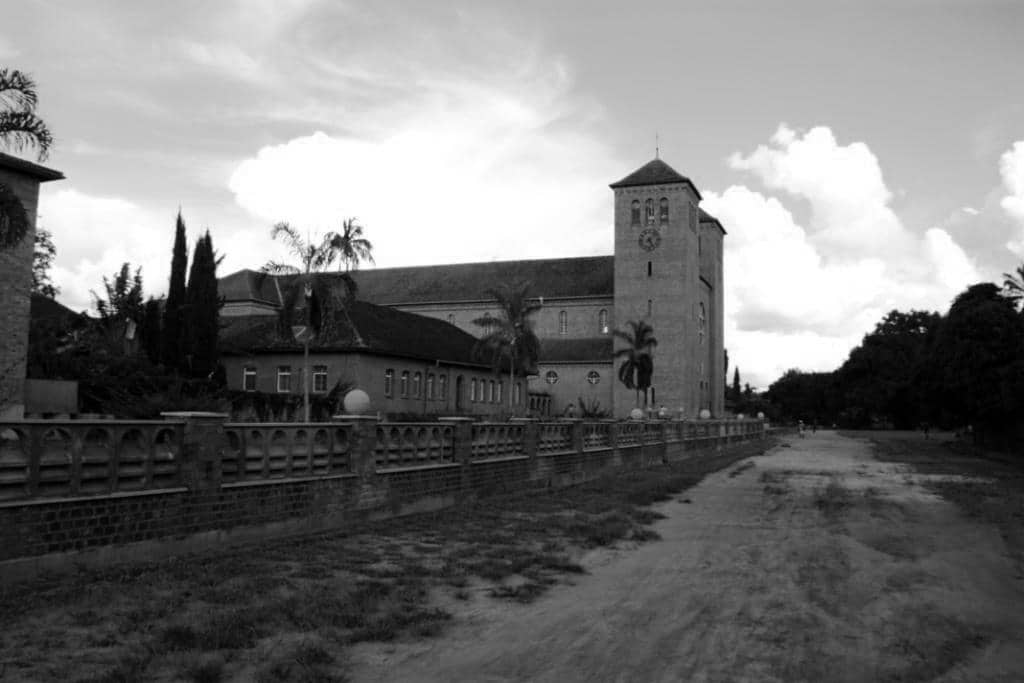
There are 29 dioceses that make up the Catholic church in Tanzania. These dioceses are divided into 4 Metropolitan provinces namely Songea, Mwanza, Tabora and Dar es Salaam. The most Catholic dioceses are Moshi 57%, Mahenge 61%, Bukoba 67%, Sumbawanga 70% and Mbinga 85%
The pastoral and charitable activities pf the Catholic Church in Tanzania run by the different dioceses are coordinated by the Catholic Secretariat. The are nine departments under the General Secretary with offices in each diocese, these are Finance, Social Communications, Liturgy, Caritas (for Emergency and Development), Medical, Education, Lay Apostolate, Catechetics and Pastoral. Each department led by the diocesan directors meets once a year to plan for the year. The plans have to be accepted by the Plenary Assembly of Bishops before they are implemented.
Ecumenical Contacts of the Catholic Church in Tanzania
When evangelism of the Catholic Church in Tanzania was just starting there was a lot of competition between different Christian denominations. The competition would sometimes get so intents that the government would have to intervene by allocating separate areas for the different denominations to avoid possible violence. However, an upside to the competition was that the denominations would put more effort in their ministry which included building more hospitals and more schools. Post independence the traditional Christian churches started working together to further social services and development. After 1975 the TEC put in place an official contacts with the CCT. The leaders of the 2 organizations who were referred to as ‘Baraza la Wazee (the council of elders)’ would meet once a year of when a need arose to discuss issues that were of interest to both organizations. The council met the Tanzanian president 3 times in the last 2 years to discuss issues that concerned them. The assemblies have translated the Bible with the help of Tanzania United Bible Society into Swahili and other local languages like Kihaya, Kisukuma, Kihaya, Kimaasai and others. They also conduct and prepare common prayers for the Unity Octave. A religious secondary school syllabus is being prepared for general biblical teachings. There is more cooperation in the social services (Cf. Social Services) which is both on Diocesan and national level.
Islam
Tanzania is among the few nations in Africa in which both Muslims 34% and Christians 44% are almost equally strong. Islam was introduced the by Arabs in East Africa in the 13th century. Islam rooted itself along the trade routes, on the coast and on the islands. The first confrontation between Islam and Christianity on the east coast in the 15th century was not a friendly one. For the Muslim Arabs it was a Jihad and for the Portuguese it was crusade. The 19th century encounter which was the 2nd one was also not friendly but for a different reason from the first. Missionaries had joined the European powers in a fight against slave trade that was being carried out by Arabs. Muslims were being used literally everywhere as subofficers because they were teh most literate in the early colonial period. This helped in the spread of Islam. Because the Christian missionaries of the Catholic Church in Tanzania were more focused on education, they soon surpassed the Muslims in their numbers in the civil service.
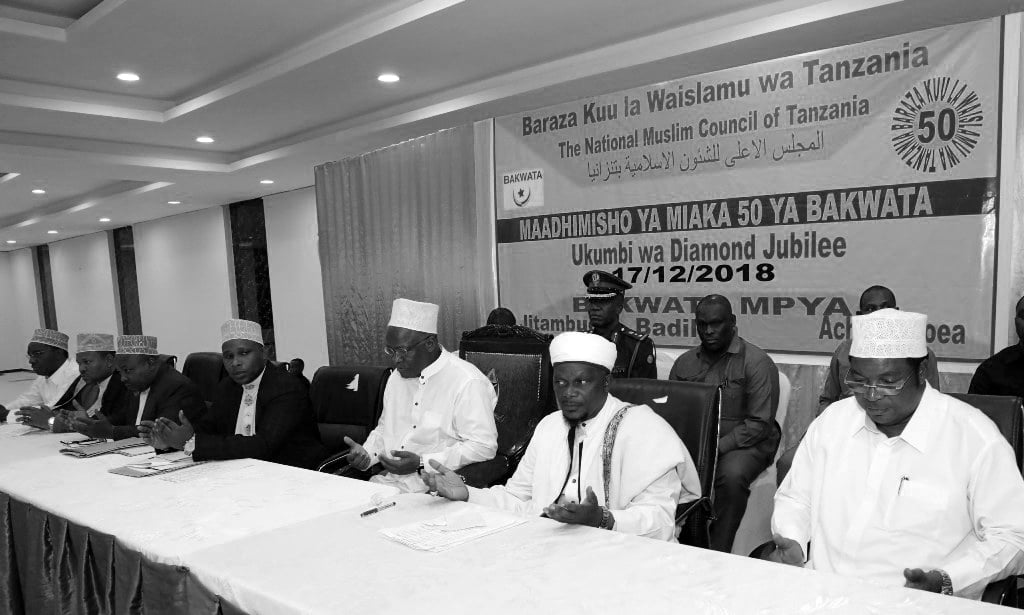
The Muslims were more vigilant in the fight for independence compared to Christians which led to Muslims having a greater representation in government than their capacity for academics. The Christians and Muslims maintained a cordial relationship even after independence and it wasn’t strange to find both Muslims and Christians in the same family. Although Muslims were allowed to attend Christian schools, to assure the Muslims, all the private schools were nationalized from 1970. BAKWATA is a Muslim organization similar to CCT and TEC for Christians. The Tanzanian government helped to form BAKWATA for the muslims so that they have somewhere to go to address any issues that they might have. Muslim fundamentalism invaded Tanzania in the 1980s which was spread by young people who were trained outside the country. The people did not recognize the BAKWATA organization. Their message is against Christian beliefs and the bible and beseech other muslims to free themselves from the Christian community. The situation became explosive in 1991 when it had reached its climax. Christians became uneasy and bishops of the Catholic Church in Tanzania issued a public statement in 1993 speaking against the incitements. It was a statement by TEC on religious blasphemies. The Muslim fundamentalists reacted to this by destroying pork shops in the city on good Friday in 1993. As a result the government had an excuse to arrest some of the extremists. The situation calmed down but still remains volatile. The moderate muslims and christians are uniting against extremists on either side.
Traditional Religions
The missionaries in the early missions were fighting against the traditional religion and its symbols. They were concerned that the new believers would revert back to superstitions. Apart from a few tribes like the Waha, Sukuma and Maasai the traditional religions have become weak. Despite all this syncretism is still dominant among Christians. The Catholic Church in Tanzania has to learn how to effectively incarnate the Christian faith in the traditional customs. They must maintain the traditional African customs and values.
Social Services by the Catholic Church in Tanzania
From the beginning of their missionary work, the Catholic Church in Tanzania has contributed highly in the social services sector by insisting on both health and education. When the Church celebrated its first 100 years of evangelization in 1968 they were running 11 medical training schools, 74 maternity clinics, 75 dispensaries, 25 hospitals, 48 homecraft centers, 15 trade schools, 8 teacher training colleges, 44 secondary schools and 1378 primary schools.
All teacher training schools, secondary schools and primary schools were nationalized. The Catholic Church in Tanzania later started building schools again when the situation allowed. By 1991 they had 6 schools for the handicapped, 2 teacher training colleges, 48 homecraft centers for girls, 73 technical and vocational schools, 23 junior seminaries, 82 secondary schools and 413 kindergartens.
In the health sector the Catholic Church in Tanzania operates 35 hospitals including 223 health centers and dispensaries and a 850 bed capacity consultant hospital of Bugando Medical Center Mwanza.
The local and missionary religious women of the Catholic Church in Tanzania play a major role in operating these social service facilities. Sister churches in America and Europe particularly Italy, Holland and Germany have been very helpful in building and maintaining these facilities.
A Memorandum of Understanding was negotiated between the Tanzanian government, the Protestants represented by the Christian Council of Tanzania(CCT) and the Catholic Church in Tanzania represented by the Tanzania Episcopal Conference (TEC) in 1992 in order to strengthen the social services sector. This negotiation of this MoU was assisted by the German partner Churches which made the government to recognize the significant role that is played by churches in the social services sector of the country. The government also committed to helping the churches by giving them part of the grants from foreign governments and promised never to nationalize the church institutions again. The MoU also authorized the formation of the CSSC (Christian Social Services Commission). CCT and TEC are each represented by four bishops and the General Secretary. The Christian Education Board of Tanzania(CEBT) for education and the Christian Medical Board of Tanzania(CMBT) for health together form the two executive organs of CSSC. The commission is responsible for coming up with policies for the medical services and education of the churches and arbitrates with the government of Tanzania on behalf of the churches. The collaboration of the 2 executive organs has resulted in more than 50% of the secondary schools and medical services in the country being run by churches
Church and State
The early missionary work that the Catholic Church in Tanzania undertook was supported by the anti slave governments and movements in Europe. The first converts were slaves that had been freed and passed on to the missionaries by the colonial government.
Early on in the German colonial period which was from 1885 – 1914, the Benedictines who were German missionaries were identified with the Government of Germany by those fighting it. As a result of this some missionaries lost their lives during the revolt. Otherwise, the Catholic Church in Tanzania developed an identity that was different from the colonial government. Catholic missionaries who were predominantly Irish, Dutch, German and French were suspicious of the Anglican British colonial masters. The only close cooperation was in the social services sector like health and education.
In the struggle for independence the Catholic Church in Tanzania remained neutral even though individual missionaries and clergy may have participated. The Catholic elite mostly followed the stand made by the church. Even though the government that was formed after independence largely comprised of anti-missionary Marxist politicians and Muslims, the church was assured by the fact that Julius Nyerere who was the then president was a practicing catholic. The president also managed to soften the concerns of the Bishops had about the ruling party’s Ujamaa beliefs which was a blend of African Socialism. The bishops had suspected Ujamaa of having communist elements. The Arusha declaration that was made in 1967 put a strain on the relationship between the church and government. The result of the declaration was nationalization of not only factories, banks and big houses but also church owned schools in 1970. By then the church owned 8 Teacher Training Schools, 44 Secondary Schools and 1420 Primary Schools. The economic depression of the late 1970s and 1980s negatively affected Ujamaa and in the 1990s a liberal economy and multipartism was introduced.
Despite the mistrust the Catholic Church in Tanzania had of Ujamaa, they collaborated on the social policy aimed towards the poor. Among these were free health services and education given by the government. The introduction of a liberal economy meant that everybody who gets a service has to pay for it as a result the rich amassed more wealth while the poor became desperate and poorer. Civil servants received very low wages and corruption increased. The church discharged two bold pastoral messages against the trend in 1993, these were “Dhamira Safi-Diraa ya Taifa Letu” which means Good Conscience – The vision of our Nation and “Ukweli utawapeni uhuru” meaning the truth will set you free. The people received these two letters well.
The Future of the Catholic Church in Tanzania
Inspite of its problems being faced by the Tanzania Church, its future is promising. The Catholic Church in Tanzania is only doing well in self sufficiency in terms of personnel but not doing well in finance. The membership of the catholic church is growing very fast. It has remodeled itself to help in the period of transitioning from a closed society with a controlled economy, controlled press and one political party to an open society with multiple parties, a liberal economy and free press.
For more articles related to Main Religion in Tanzania, click here!

























